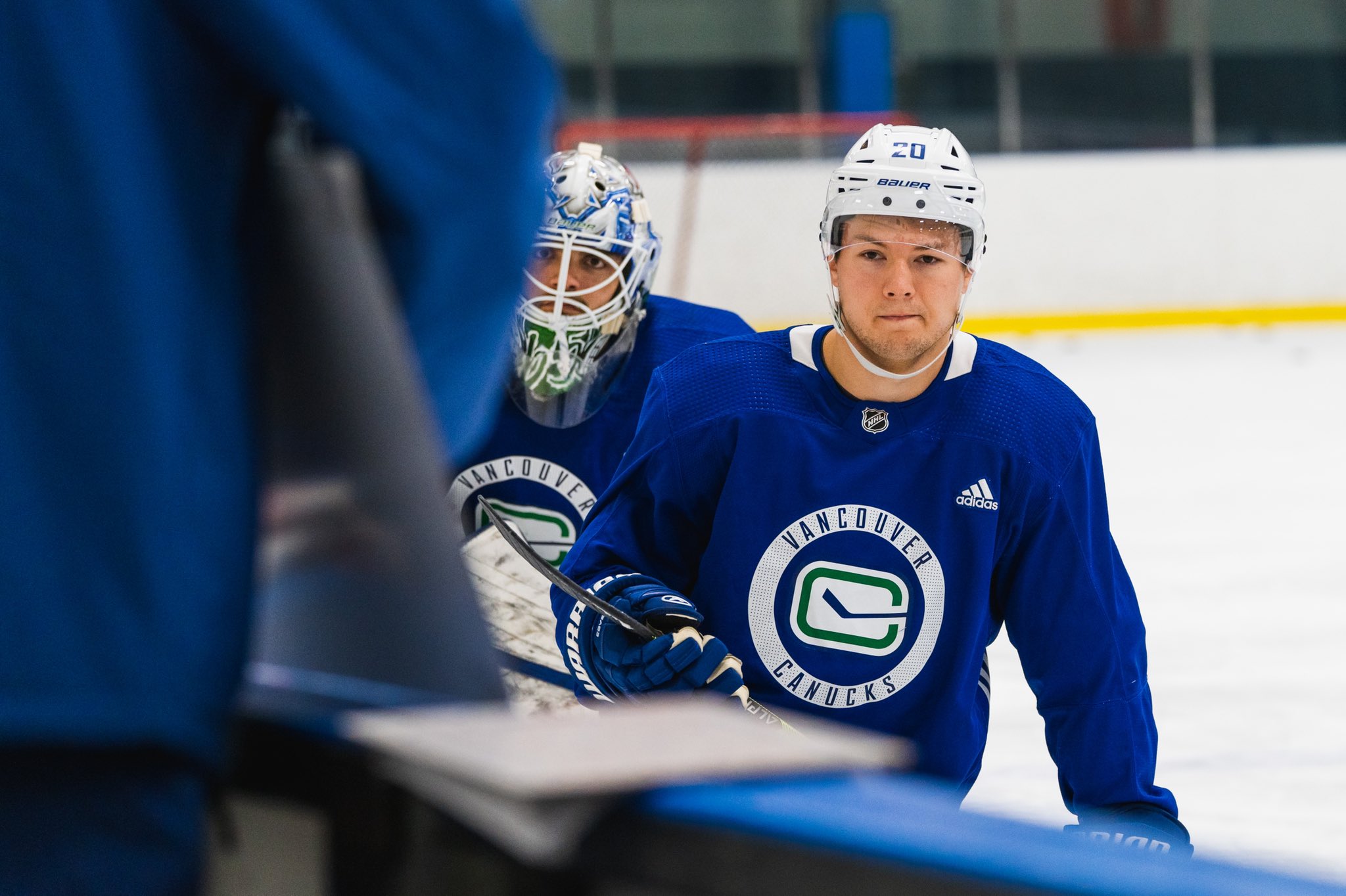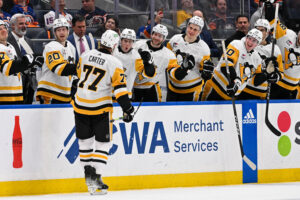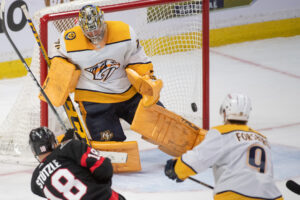NHL player development seems to always result in more questions than answers. How likely is it for a top pick to pan out? What makes a player a “steal”? Last Word On Hockey will be starting a new series on how to properly develop prospects from all different spots throughout the draft. This week’s piece involves draft picks in the back-half of the first round and how they were used early in their careers.
NHL Player Development Of First-Round Picks
In the span of 2005 through 2015, there were 84 total selections made between 16th overall and 30th overall on forwards playing in North America. Looking at all 84 forwards, they were split into different categories. Those categories were “Forwards Deemed NHL-Ready and Brought In Immediately When Ready,” “Forwards Near NHL-Ready and Brought In Immediately When Near-Ready,” “Forwards Rushed Slightly,” “Forwards Rushed,” “Forwards Forced,” “A Little Patience,” “Patience,” and “Too Much Patience.”
There were 16 forwards who fell into the fourth category, “forced,” on the list. Of those 16 players, six made their NHL impacts in their DY+2 seasons. Those players are Jared McCann, Nick Foligno, Curtis Lazar, Jordan Caron, Tom Wilson and Colton Gillies. In this piece, we will look at Lazar and Caron.
In this piece, we will be using stats from eliteprospects (raw stats) and hockey-reference (ice time). Additionally, the analytics we are using are as follows: even-strength offence goals above replacement (EVO), even-strength defence goals above replacement (EVD), wins above replacement (WAR) and goals above replacement (GAR). Those analytics are from evolving-hockey (subscription required).
NHL Player Development Of Curtis Lazar
Lazar, drafted 17th overall by the Ottawa Senators in the 2013 NHL draft, came out of the Edmonton Oil Kings organization of the WHL. In his DY-1 season, he scored 20 goals and 11 assists for 31 points in 63 games, for 0.492 points per game.
First skate in Vancouver ✅
Welcome, Curtis Lazar! pic.twitter.com/tr0UGXkBXU
— Vancouver #Canucks (@Canucks) September 12, 2022
That ranked 65th out of the aforementioned 84 forwards in DY-1 production. The following season, Lazar scored 38 goals and 23 assists for 61 points in 72 games, for 0.847 points per game. That ranked 70th out of the same 84 forwards in DY production. After getting drafted, Lazar would play one more WHL season before being given a chance at the NHL level.
In that final WHL season, Lazar scored 41 goals and 35 assists for 76 points in 58 games, for 1.31 points per game. That ranked 24th out of the 82 forwards still outside the NHL in DY+1 production. The following season, Lazar would get a chance with the Senators in the big leagues.
How Was Lazar Used
Lazar, in his first NHL season, would play 67 games and average 12:54 time on ice per game. In that relatively limited role, Lazar would score just six goals and nine assists for 15 points. Analytically, however, he showed some underlying potential. He was solid all around, with an EVO of 3.8 and an EVD of 1.1. Those are both strong metrics for a rookie. Additionally, his WAR (1.0) and GAR (5.2) were impressive, especially considering the not-so-great raw stats.
In his second NHL season, he would play more games, at 76, and average more ice time, now up to 13:52 per game. With the slightly larger role, Lazar scored six goals and 14 assists for 20 points. Again, his counting stats were unimpressive. But this time, his analytics painted this season as worse than the counting stats suggest. His EVO (-3.0) and EVD (-2.9) fell tremendously. Going hand-in-hand with those even-strength metrics, Lazar’s WAR (-0.7) and GAR (-3.4) also tumbled down below replacement level. His second season was an extremely poor one.
Year Two Woes Led To Year Three Regression
In his third season, Lazar would see some regression. Playing up and down between the NHL and AHL, he also saw himself be traded to the Calgary Flames halfway through. Regardless, he saw 13 AHL games with Ottawa’s affiliates, the Binghamton Senators. In those 13 games, he scored three goals and four total points. At the NHL level, he would play a combined 37 games between Ottawa and Calgary, averaging just 9:08 per game.
With an incredible role reduction in both games played and ice time, Lazar posted just one goal and four total points on the year. Analytically, he was better than year two, but not by much. Both his EVO (-1.3) and EVD (-0.3) finished below replacement level. Meanwhile, his WAR (0) finished at replacement level, while his GAR (-0.2) just fell below that mark.
Ever since that third season, in 2016-17, he played two more seasons with the Flames. In those seasons, he scored 12 points across 66 games, with his second season in Calgary spent almost entirely at the AHL. Lazar then joined the Buffalo Sabres for a year and a half, scoring 10 goals and nine assists for 19 points across 71 games before being sent to the Boston Bruins mid-way through the 2020-21 season. He would stick with the Bruins for the remainder of that season, plus the next one. In total, he scored 10 goals and 10 assists for 20 points in 87 total games as a Bruin. This upcoming season, he is slated to play for the Vancouver Canucks.
NHL Player Development Of Jordan Caron
Caron, drafted 25th overall by the Boston Bruins in the 2009 NHL draft, came out of the Rimouski Oceanic organization of the QMJHL. In his DY-1 season, Caron scored 20 goals and 23 assists for 43 points in 46 games, for 0.935 points per game. That ranked 29th among those 84 forwards in DY-1 production.
The following season with Rimouski, Caron scored 36 goals and 31 assists for 67 points in 56 games, for 1.196 points per game. That ranked 38th out of those same 84 forwards in DY production. Upon getting drafted, Caron would play one last season in the QMJHL before making the jump to the professional ranks.
In that final season in juniors, he would split between the Oceanic and the Rouyn-Noranda Huskies, thanks to a trade. Combined, between the two teams, Caron scored 26 goals and 27 assists for 53 points in 43 games, for 1.233 points per game. That ranked 28th out of 82 forwards still outside the NHL in DY+1 production. Caron would join the Bruins the following season.
How Was Caron Used
In his first professional season, Caron played between the AHL and NHL. At the AHL level, he scored 12 goals and 16 assists for 28 points in 47 games. Meanwhile, in the NHL, Caron would play 23 games and average 12:40 per game. With that decent role, he scored three goals and four assists for seven points. Analytically, Caron had a modest season, which matches his raw stats. His EVO (1.2) was decent, as was his EVD (0.3). Neither jumped off the page, and that led to his WAR (0.2) and GAR (1.5) to also be decent, but not eye-opening.
In his second season, Caron would see more time up at the NHL level, but still split time at the AHL level. With the AHL’s Providence Bruins, he scored four goals and nine assists for 13 points in 17 games, a solid statline. With more NHL time, he would play 48 games. However, his role was reduced, down to 11:32 ice time per game, over a minute per game less. With that new role, he scored seven goals and eight assists for 15 points. His analytics reduced alongside his role, with his EVO (-0.2) falling below replacement level, while his EVD (0.6) was the only stat that improved. Overall, his WAR (0) was at replacement level, while his GAR (-0.2) followed his EVO and fell below replacement level.
Year Three See’s More Regression
In Caron’s third season, he would fall back into what he saw in his rookie season. He played mostly in the AHL, getting a small amount of games at the top level. Across 47 AHL games, he scored 11 goals and seven assists for 18 points, not a great statline. Meanwhile, at the NHL level, he saw just 17 games, averaging an even smaller role of 9:24 per game. That led to him scoring just three points. Analytically, it was not much prettier. While his EVO (0.2) barely improved above replacement level, his EVD (-1.2) was bad. Those even-strength metrics led to his WAR (-0.3) and GAR (-1.4) to fall even further from the prior year.
Caron Never Reached His Potential
Following that third season in 2012-13, Caron would play 69 more NHL games across four more seasons in North America. He split between three teams in those four seasons: the Bruins, Colorado Avalanche and St. Louis Blues. With the Bruins, he played just 46 more games after year three, with three points. Joining the Avalanche, he played just 19 games with not a single point to show for it in the 2014-15 season. Joining the Blues for two seasons in the 2015-16 and 2016-17 seasons, Caron would only play four games with them, with no points.
After those four seasons, Caron would head to Europe, where he played in four different leagues across the final four seasons of his career. He played in the DEL (44 games, 33 points), KHL (33 games, 12 points), Swiss NL (four games, one point), and ICEHL (37 games, 25 points). Caron retired after the 2020-21 season. Safe to say, the NHL player development of Caron didn’t go particularly well, but whose fault would that be? That’s a bigger story for another day.
Junior league stats via Elite Prospects, NHL stats via Hockey Reference, NHL analytics via Evolving Hockey






